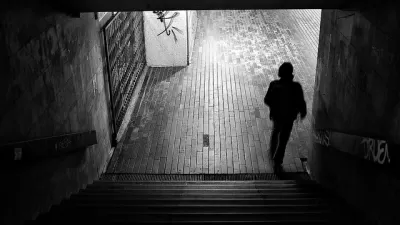The October issue of Land Lines reveals the remarkable story of how an estimated one million people came to live in subterranean apartments in Beijing.

Annette M. Kim, associate professor at the Sol Price School of Public Policy at the University of Southern California, reports on the market and policy conditions that drove so many residents to live underground.
According to the abstract for the article, "an estimated one million people are living in subterranean apartments in Beijing, where affordable housing near employment is scarce for the greater city’s 23 million inhabitants (Xing 2011). These units are often windowless subdivisions in basements and air raid shelters, and the median size is 9.75 square meters."
The city's subterranean spaces result "from a policy dating to 1950 that requires all new buildings to have common basements and air defense shelters. Construction codes specify building guidelines, including the provision of infrastructure such as electricity, water, and sewers. This supply of underground space has grown exponentially amid China’s extraordinary building boom in recent decades. Some complexes contain as many as 600 units below street level."
The article provides analysis of the underground market, the housing policy that enabled, and then reacted to, the underground conditions, and recommendations for making rental housing affordable in Beijing.
FULL STORY: Hidden City: Beijing’s Subterranean Housing Market

Planetizen Federal Action Tracker
A weekly monitor of how Trump’s orders and actions are impacting planners and planning in America.

San Francisco's School District Spent $105M To Build Affordable Housing for Teachers — And That's Just the Beginning
SFUSD joins a growing list of school districts using their land holdings to address housing affordability challenges faced by their own employees.

The Tiny, Adorable $7,000 Car Turning Japan Onto EVs
The single seat Mibot charges from a regular plug as quickly as an iPad, and is about half the price of an average EV.

With Protected Lanes, 460% More People Commute by Bike
For those needing more ammo, more data proving what we already knew is here.

In More Metros Than You’d Think, Suburbs are Now More Expensive Than the City
If you're moving to the burbs to save on square footage, data shows you should think again.

The States Losing Rural Delivery Rooms at an Alarming Pace
In some states, as few as 9% of rural hospitals still deliver babies. As a result, rising pre-term births, no adequate pre-term care and "harrowing" close calls are a growing reality.
Urban Design for Planners 1: Software Tools
This six-course series explores essential urban design concepts using open source software and equips planners with the tools they need to participate fully in the urban design process.
Planning for Universal Design
Learn the tools for implementing Universal Design in planning regulations.
Smith Gee Studio
City of Charlotte
City of Camden Redevelopment Agency
City of Astoria
Transportation Research & Education Center (TREC) at Portland State University
US High Speed Rail Association
City of Camden Redevelopment Agency
Municipality of Princeton (NJ)




























